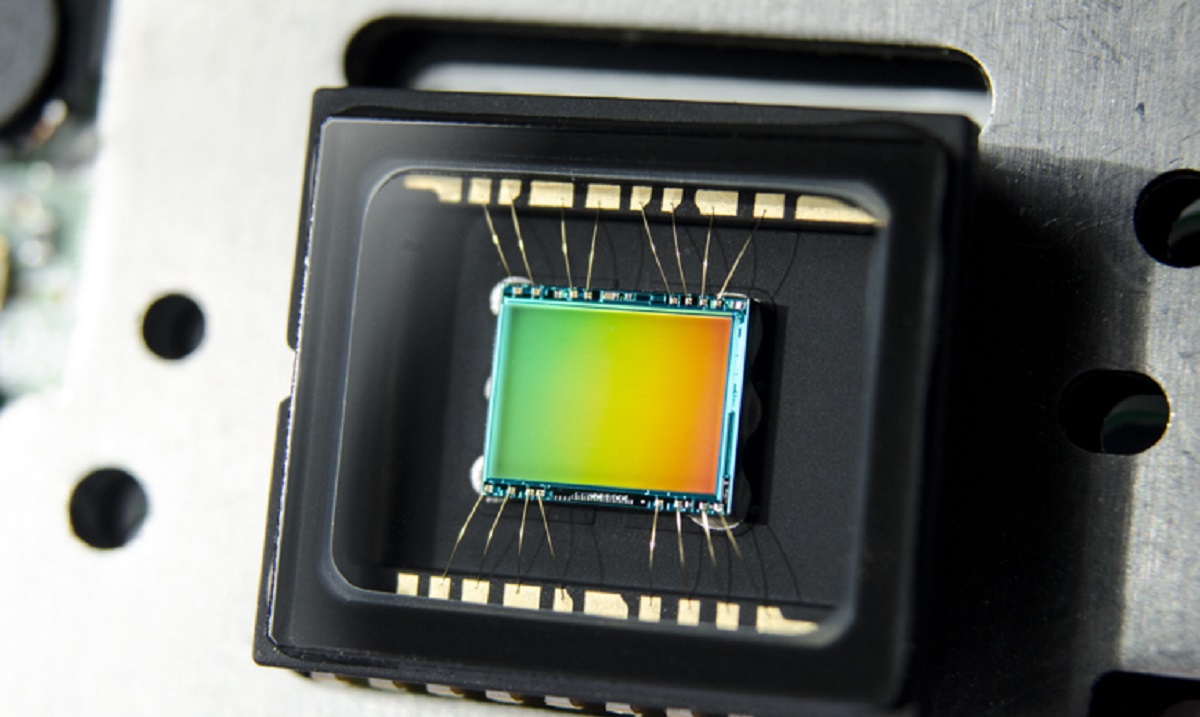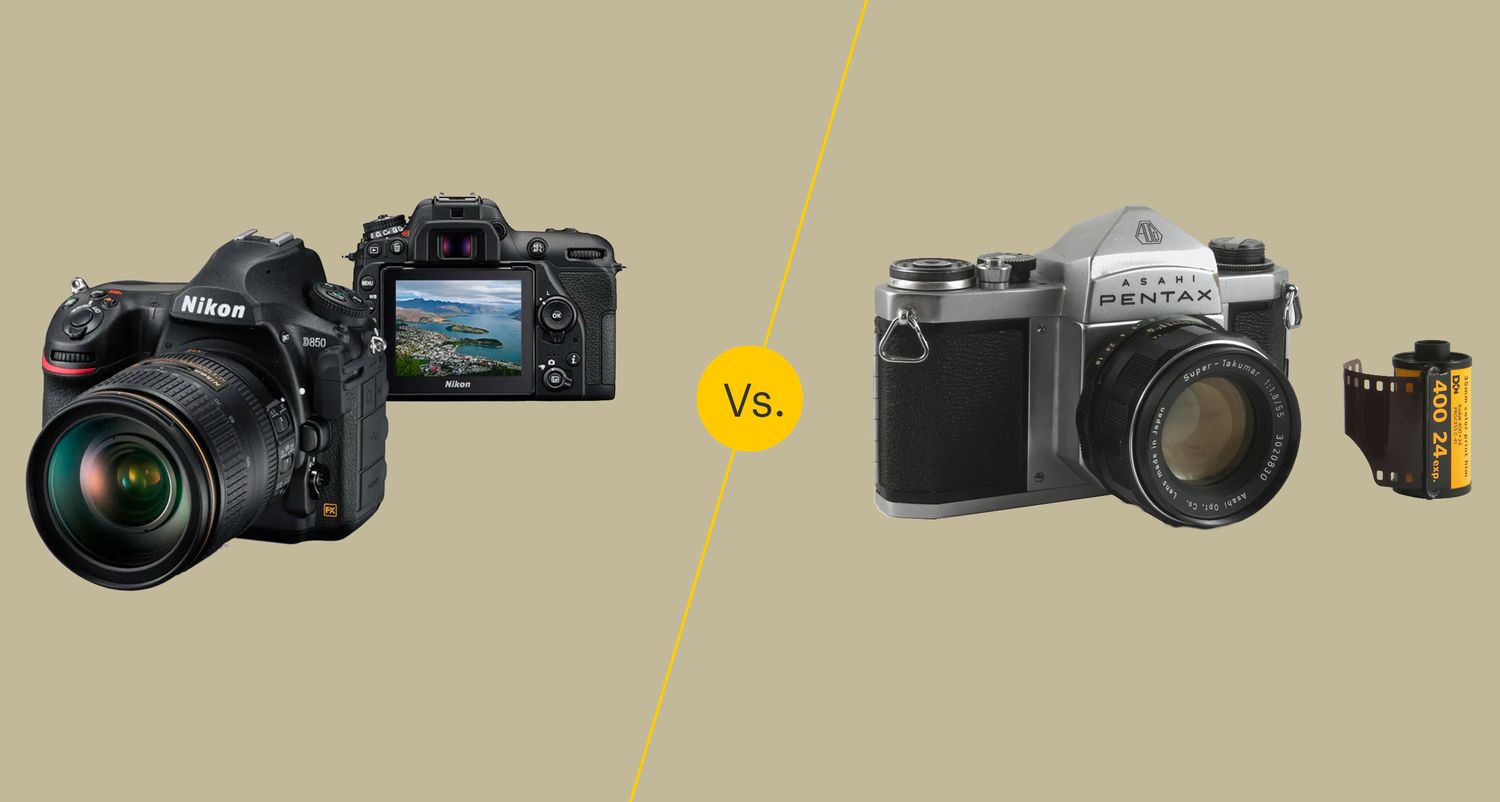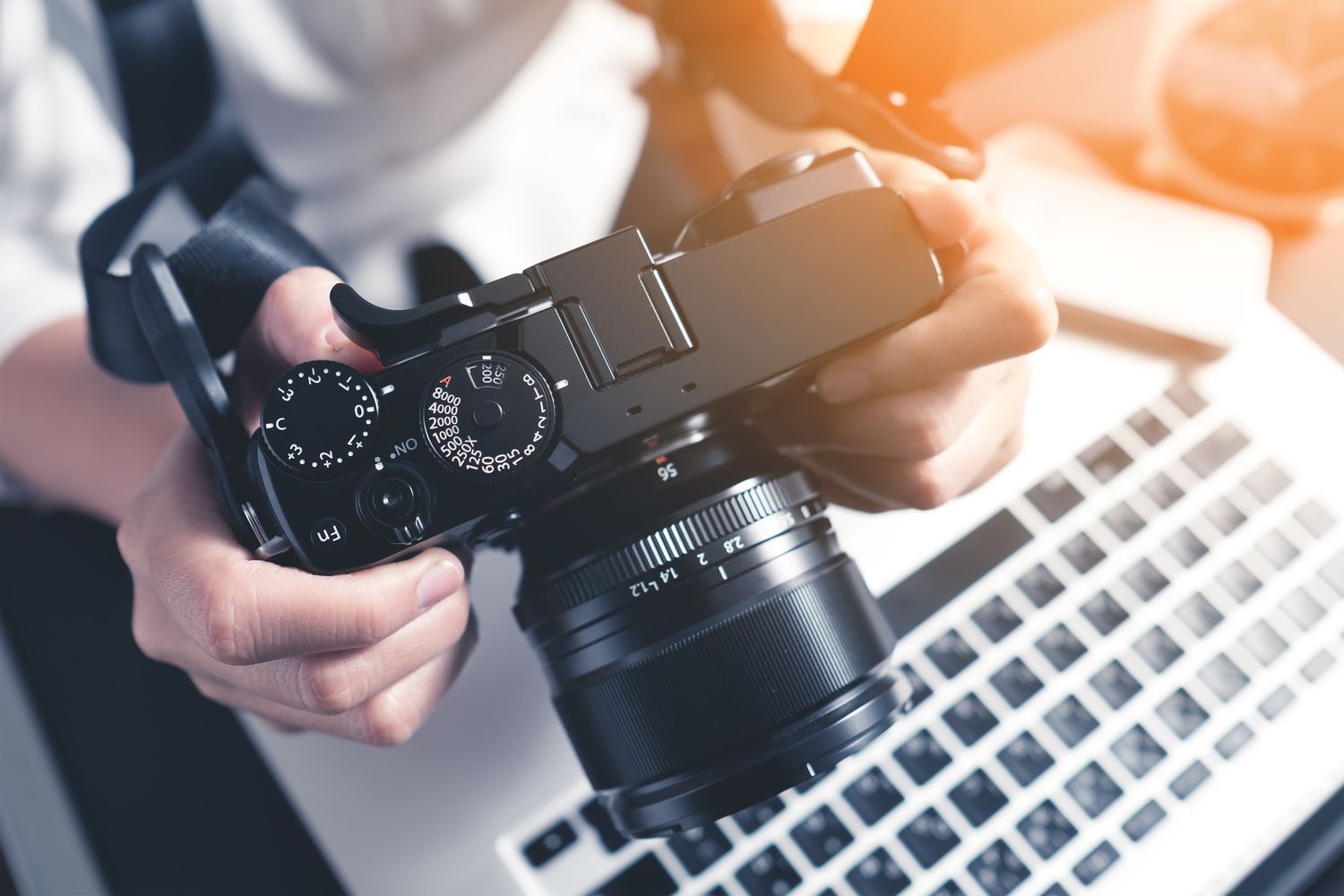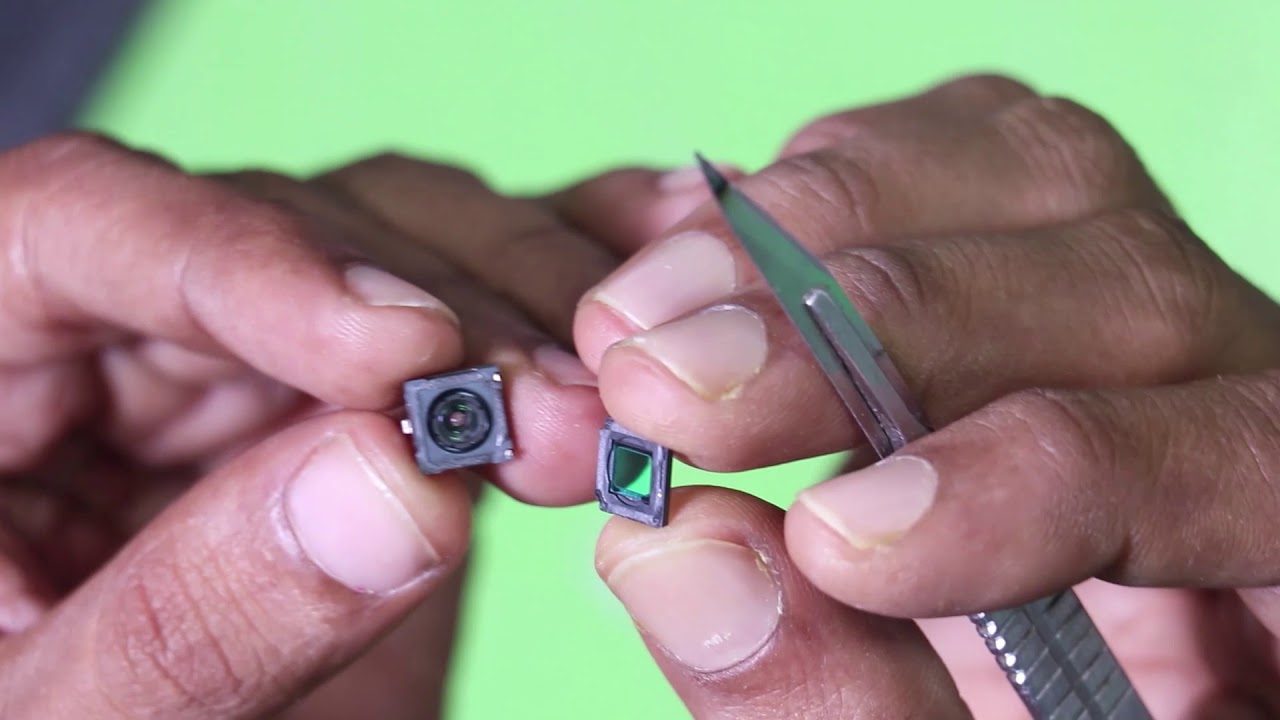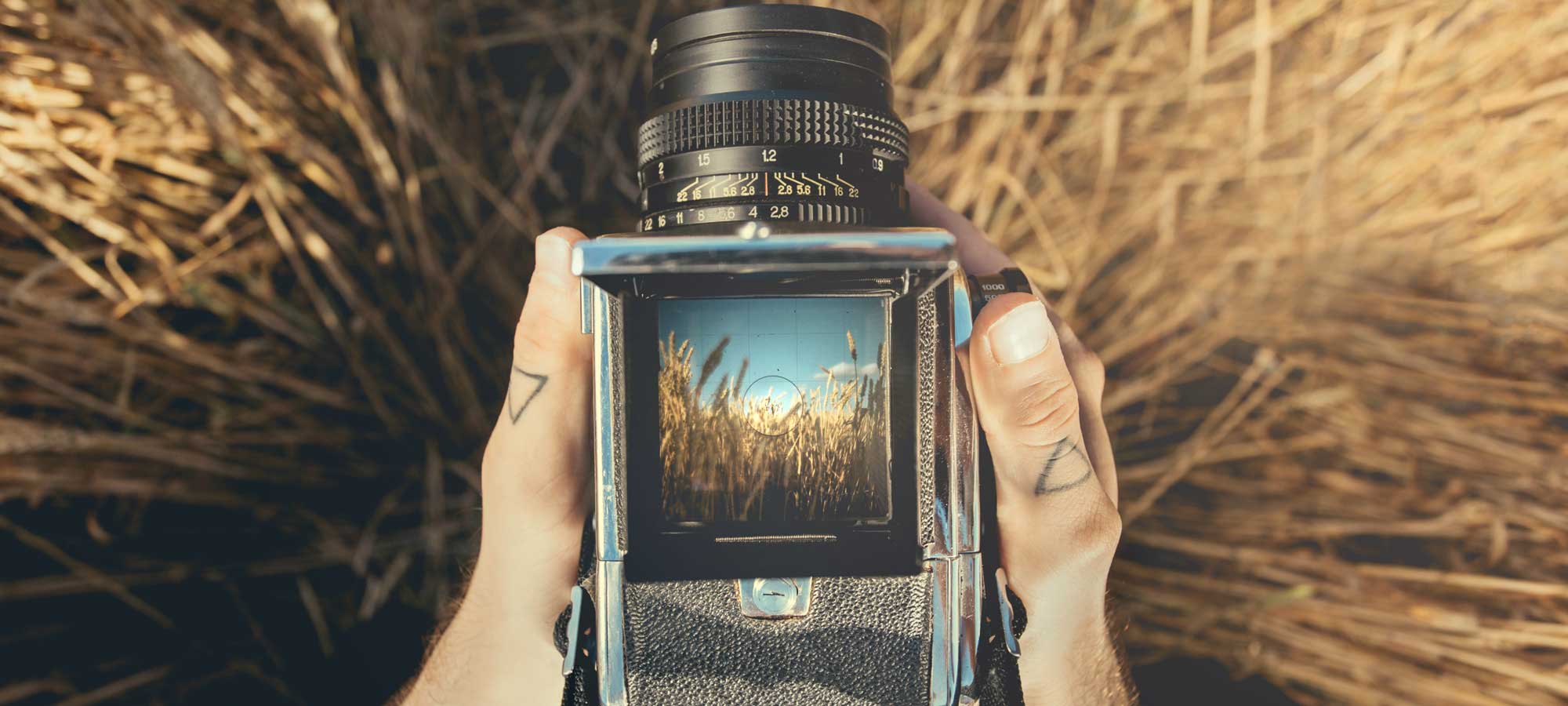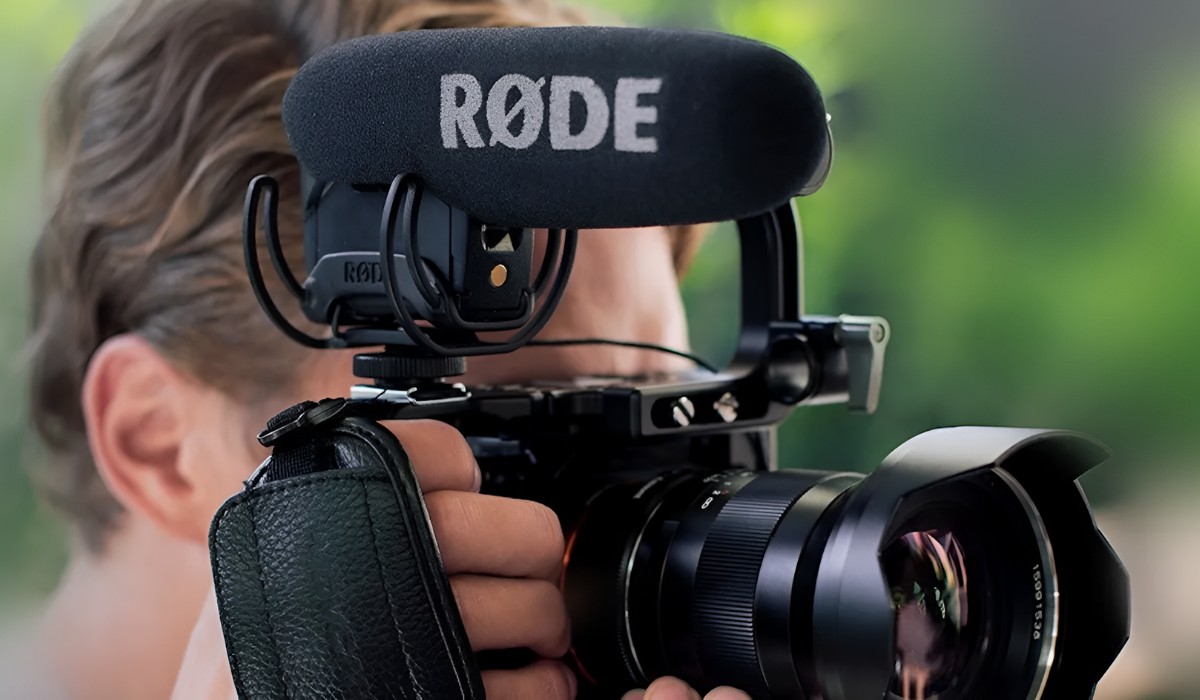Introduction
Digital camera sensors play a crucial role in capturing and producing high-quality images. These small yet mighty devices are the heart of modern cameras, allowing us to capture moments and create lasting memories. Understanding how digital camera sensors work is essential for both professional photographers and enthusiasts alike.
In this article, we will demystify the technology behind digital camera sensors, exploring their structure, function, and key features that contribute to image quality. Whether you’re a budding photographer or simply curious about the inner workings of your camera, this guide will provide valuable insights into the fascinating world of digital sensor technology.
Camera sensors convert light into electrical signals, which are then processed to create digital images. Each sensor is made up of a grid of millions of tiny light-sensitive pixels, each capable of capturing a single point of light. As the scene is exposed to light, these pixels gather information about the intensity and color of the incoming light. This data is then processed to create a digital representation of the image.
There are two main types of digital camera sensors: CMOS (Complementary Metal-Oxide-Semiconductor) and CCD (Charge-Coupled Device). Both types serve the same purpose but differ in their internal structure and operation. CMOS sensors are more commonly found in modern cameras due to their lower power consumption and faster readout speeds, while CCD sensors are known for their superior image quality and lower noise levels.
The structure of the pixels themselves also influences the quality of the captured image. Most sensors employ a Bayer filter, which uses an array of red, green, and blue color filters to separate incoming light into its different color components. This pixel structure allows cameras to capture and reproduce accurate colors in the final image.
Another crucial aspect of camera sensors is their sensitivity to light. The amount of light a sensor can gather directly affects its performance in low-light conditions. Manufacturers often specify the sensor’s ISO range, which indicates its sensitivity to light. Higher ISO values allow for better low-light performance but can introduce more digital noise into the image. Balancing ISO settings is essential for achieving the desired image quality in various lighting conditions.
Furthermore, the size of the camera sensor also plays a significant role in image quality. Generally, larger sensors tend to capture more light and provide better dynamic range, resulting in greater detail and smoother transitions between different tones in an image. This is why professional cameras often have larger sensors, which contribute to their superior image quality.
In summary, digital camera sensors are the backbone of modern photography, converting light into digital images. By understanding how sensors work, photographers can make informed decisions regarding camera settings, lens choices, and image quality. In the following sections, we will explore each aspect of digital camera sensors in more detail, providing a comprehensive understanding of this crucial component in the world of photography.
Overview of Digital Camera Sensors
Digital camera sensors are the core technology that allows cameras to capture images. These sensors are responsible for converting light into electrical signals, which are then processed to create digital images. Understanding the basics of digital camera sensors is essential for photographers aiming to capture high-quality photos.
At a fundamental level, digital camera sensors consist of an array of millions of light-sensitive pixels. Each pixel has the ability to gather information about the intensity and color of the incoming light. When light strikes a pixel, electrons are generated, and the number of electrons corresponds to the brightness of that particular pixel.
The two main types of sensor technologies used in digital cameras are CMOS (Complementary Metal-Oxide-Semiconductor) and CCD (Charge-Coupled Device). CMOS sensors are more prevalent due to their lower power consumption, faster readout speeds, and versatility in supporting various camera features. CCD sensors, on the other hand, are known for their excellent image quality and lower noise levels, making them ideal for more demanding photography applications.
The resolution of a digital camera sensor is measured in megapixels, which refers to the number of pixels in the sensor’s array. Higher megapixel counts generally allow for more detailed images and larger print sizes. However, it’s important to note that a higher megapixel count does not necessarily guarantee better image quality; other factors such as pixel size, sensor size, and noise reduction algorithms also contribute to image fidelity.
The pixel structure of a camera sensor also plays a critical role in image quality. Most sensors utilize a Bayer filter array, named after its inventor Bryce Bayer. This filter array consists of alternating red, green, and blue color filters on individual pixels. By capturing different color information at each pixel, the sensor can interpolate and combine this data to produce a full-color image.
Sensor technology has advanced significantly in recent years, enabling improved low-light performance and enhanced dynamic range. Backside-illuminated (BSI) sensors, for example, have the photodiodes placed on the backside of the sensor, allowing more light to reach the pixels and resulting in better sensitivity and lower noise in low-light conditions.
In summary, digital camera sensors are the vital components that enable cameras to capture digital images. Their technology, resolution, pixel structure, and other factors all contribute to the overall image quality. By understanding the basics of digital camera sensors, photographers can make informed choices regarding camera selection, image composition, and post-processing techniques, ultimately leading to stunning and captivating photographs.
Image Sensing
Image sensing is the fundamental process by which digital camera sensors capture light and convert it into electrical signals, which are then processed to produce digital images. This process involves several steps that are crucial for achieving accurate and high-quality image reproduction.
When light enters the camera lens, it passes through various optical elements before reaching the sensor. The lens focuses the light onto the sensor surface, ensuring that the incoming light is evenly distributed across the sensor array. This is particularly important for achieving sharpness and minimizing vignetting or other optical distortions.
Once the light reaches the sensor, it interacts with millions of individual photosensitive pixels. In a color image sensor, each pixel is typically equipped with a filter to capture a specific color channel – red, green, or blue. This color filter array, most commonly known as the Bayer filter, ensures that each pixel records a particular color in the final image.
As the light hits the pixels, it creates an electric charge proportional to the intensity of the light. This charge is then converted into a measurable voltage, which is subsequently digitized and processed by the camera’s image processing engine. The analog-to-digital converter (ADC) is responsible for converting the analog signal into digital data, which can be directly stored as a digital image file.
One of the critical aspects of image sensing is the accuracy with which the sensor can capture the colors in the scene. Due to the nature of the Bayer filter, each pixel only captures one of the three primary colors – red, green, or blue. To create a full-color image, the missing color information is derived through a process called demosaicing, which interpolates the colors based on the adjacent pixels’ values. This interpolation introduces some degree of color inaccuracies, known as color artifacts, which can be mitigated through advanced demosaicing algorithms.
Image sensing also involves the concept of exposure, which refers to the amount of light reaching the sensor. Proper exposure is essential for achieving well-balanced images with accurate brightness and optimal dynamic range. Exposure is controlled through the camera’s settings, such as aperture, shutter speed, and ISO. Different exposure settings can result in different creative effects, from freezing fast motion with a high shutter speed to creating long-exposure shots with a slow shutter speed.
In summary, image sensing is the crucial process by which digital camera sensors capture light and convert it into electrical signals. The interaction between light, pixel sensors, and color filter arrays determines the accuracy and quality of the final digital image. Understanding the principles of image sensing is key for photographers to make informed decisions about camera settings and techniques, resulting in visually stunning and true-to-life photographs.
CMOS vs CCD Sensors
When it comes to digital camera sensors, two main technologies dominate the market – CMOS (Complementary Metal-Oxide-Semiconductor) and CCD (Charge-Coupled Device). While both CMOS and CCD sensors serve the same purpose of capturing light and converting it into electrical signals, they differ in their internal structure, performance characteristics, and suitability for different photography applications.
CCD sensors were the first to be widely used in digital cameras. They consist of a grid of light-sensitive photodiodes, which capture the incoming light and convert it into electrical charges. These charges are then read out and processed to create the digital image. CCD sensors are known for their excellent image quality, high dynamic range, and low noise levels. They are particularly favored in applications that require utmost image fidelity, such as scientific imaging, astrophotography, and professional photography.
On the other hand, CMOS sensors have gained popularity in recent years due to their numerous advantages over CCD sensors. CMOS sensors are composed of individual light-sensitive photodiodes, but each pixel is equipped with its own amplifier and circuitry. This design allows for faster readout speeds, reduced power consumption, and enhanced flexibility in incorporating additional features, such as on-sensor autofocus and image stabilization.
One significant advantage of CMOS sensors is their faster readout speeds, which enable high-speed continuous shooting and video recording. This makes them well-suited for action photography, sports, and videography, where capturing fast-moving subjects is crucial. CCD sensors, in contrast, suffer from slower readout speeds, making them less ideal for capturing rapid action accurately.
CMOS sensors also excel in terms of power efficiency. The individual amplifiers in each pixel of a CMOS sensor consume less power, resulting in lower energy consumption compared to CCD sensors. This efficiency translates into longer battery life, making CMOS-based cameras more practical for extended shooting sessions, especially when photographing in remote locations where access to power sources may be limited.
Furthermore, CMOS sensors have improved significantly in terms of image quality over the years. While CCD sensors historically provided superior image quality, CMOS sensors have caught up and now deliver comparable performance in terms of dynamic range, color accuracy, and noise levels. Many professional photographers and studios now use CMOS-based cameras for their projects, as they offer a good balance between image quality and practicality.
However, it’s worth noting that CCD sensors still have their place in the market. Their superior image quality and lower noise levels make them the preferred choice for specialized applications, such as scientific imaging and high-end studio photography, where absolute image fidelity is paramount.
In summary, both CMOS and CCD sensors have their strengths and weaknesses, making them suitable for different photography applications. CMOS sensors offer faster readout speeds, lower power consumption, and enhanced flexibility, making them ideal for action photography and general-purpose shooting. CCD sensors, though slower and less power-efficient, are still valued for their superior image quality and low noise levels, making them the preferred choice for specialized applications where absolute image fidelity is crucial.
Pixel Structure
The pixel structure is a critical aspect of digital camera sensors, as it directly influences the image quality and color reproduction capabilities. Each pixel on a camera sensor is responsible for capturing and converting light into electrical signals, forming the building blocks of the final digital image.
Most camera sensors utilize a pixel structure based on the Bayer filter array, named after the scientist Bryce Bayer who invented it. The Bayer filter is a pattern of red, green, and blue color filters placed over individual pixels in a specific arrangement. The filter array is designed in a way that each pixel captures only one primary color – red, green, or blue. These primary colors are then combined and interpolated to create a full-color image.
The Bayer filter array typically has twice as many green pixels as red or blue pixels. This is because the human eye is more sensitive to green light, and having more green pixels improves the overall image quality and color accuracy. The green pixels capture luminance data, which contributes to the sharpness and brightness of the final image, while the red and blue pixels provide color information.
Demosaicing is the process that takes place after capturing the color information using the Bayer filter. It involves interpolating the missing color values for each pixel based on the surrounding pixels of different colors. The demosaicing algorithm calculates the intensity of the missing colors by examining the color values of neighboring pixels and creates a full-color image by combining these interpolated values.
The pixel structure and demosaicing process introduce some degree of color inaccuracies and artifacts, known as demosaicing artifacts or color moiré patterns. These patterns can appear as false colors, jagged edges, or unnatural color transitions in the final image. To mitigate these artifacts, many cameras employ advanced demosaicing algorithms that analyze the captured data and apply corrections to produce more accurate and visually pleasing results.
In recent years, camera manufacturers have introduced sensor technologies that deviate from the traditional Bayer filter array. Some sensors utilize alternative color filter patterns, such as the X-Trans sensor in Fuji cameras, which claims to reduce color moiré by employing a more random arrangement of color filters. Others have introduced technologies like Sigma’s Foveon sensors, which capture color information at different depths within the semiconductor material, aiming to achieve higher color accuracy and fidelity.
Ultimately, the pixel structure is a vital component of camera sensors, as it directly impacts the final image quality and color reproduction. Whether using the traditional Bayer filter pattern or exploring alternative technologies, understanding the pixel structure and its impact on image rendering can help photographers make informed decisions when selecting and working with their camera equipment.
Bayer Filter
The Bayer filter is a fundamental component of digital camera sensors, playing a crucial role in capturing accurate color information. Named after its inventor, Bryce Bayer, the Bayer filter is an array of color filters placed over individual pixels in a specific arrangement. This filter allows camera sensors to capture and reconstruct full-color images using a technique known as demosaicing.
The Bayer filter pattern consists of alternating red, green, and blue filters arranged in a repeating 2×2 square pattern. In this pattern, each pixel is filtered to capture one of the three primary colors – red, green, or blue. Green filters predominate and are twice as prevalent as red and blue filters. This design is based on the human eye’s higher sensitivity to green light, as our visual system relies heavily on green information for perceiving brightness and sharpness.
When light enters the camera lens, it passes through the Bayer filter, and each pixel captures only one color component of the incoming light. This means that the image captured by the camera sensor contains incomplete color information for each pixel. To create a full-color image, demosaicing algorithms interpolate the missing color values of each pixel using the surrounding pixels of different colors. These algorithms analyze the patterns and luminance values captured by the sensor to estimate the most plausible color data for each pixel.
The demosaicing process can introduce some degree of color artifacts, such as false colors, color bleeding, or moiré patterns. These artifacts occur due to the interpolation process and the inherent limitations of the Bayer filter pattern. Advanced demosaicing algorithms and noise reduction techniques are employed to minimize these artifacts and produce more accurate and visually pleasing images.
While the Bayer filter enables the reconstruction of full-color images, it also imposes some limitations. The sensor captures only 25% of the available red and blue color information in each pixel, as green elements are twice as prevalent. This slight imbalance in color information can affect the color accuracy and can lead to color aliasing or inaccurate color reproduction, especially in high-contrast or fine-detail areas.
To mitigate these limitations and enhance image quality, camera manufacturers often employ various technologies and techniques. Some cameras incorporate additional sensors to capture pure red and blue light, allowing for improved color accuracy. Others use alternative color filter patterns or sensor structures to reduce color artifacts and improve color rendition. Nevertheless, the Bayer filter remains the most commonly utilized filter pattern in digital camera sensors due to its simplicity, effectiveness, and compatibility with existing industry standards.
In summary, the Bayer filter is a key component of digital camera sensors, enabling the capture and reconstruction of full-color images. Its arrangement of red, green, and blue filters allows for the capture of color information at each pixel. Demosaicing algorithms then interpolate and reconstruct the missing color values to create visually accurate and appealing images. While the Bayer filter has certain limitations, it continues to be widely used in camera sensors and serves as the foundation for digital color imaging.
Photon Sensitivity
Photon sensitivity is a crucial characteristic of digital camera sensors, as it determines how well the sensor can detect and capture light. It plays a significant role in the sensor’s ability to perform in various lighting conditions and directly influences image quality, particularly in low-light environments.
Photon sensitivity refers to how many photons, which are particles of light, are required to generate an electrical signal strong enough to be detected by the sensor. The higher the sensitivity, the fewer photons are needed to create a measurable signal. This means that a more sensitive sensor can capture images in dimmer lighting conditions, resulting in lower noise levels and better image quality.
Sensor manufacturers often express the photon sensitivity of a sensor using the ISO rating, a standardized scale originally used in film photography. A higher ISO value indicates greater sensitivity to light, allowing for better performance in low-light situations. However, increasing the ISO also increases the likelihood of introducing digital noise, which can degrade image quality.
Low-light performance is an essential factor to consider, particularly in situations where the available light is limited, such as nighttime photography or indoor shooting without artificial lighting. A sensor with high photon sensitivity can capture better images in challenging lighting conditions, resulting in less noise and improved detail in dark areas of the photographs.
To achieve higher photon sensitivity, camera manufacturers employ various techniques and technologies. Backside-illuminated (BSI) sensors, for example, have the traditional sensor structure reversed, positioning the photosensitive layer on the backside of the sensor. This design allows more light to reach the pixels since there are fewer obstructions in the light path, resulting in increased photon sensitivity.
In addition to sensor design, other factors can influence photon sensitivity, such as the size of the photosites or pixels on the sensor. Larger photosites have a larger surface area to collect light, making them more sensitive to photons and improving low-light performance. This is one reason why cameras with larger sensors often excel in low-light photography compared to compact cameras with smaller sensors.
It’s important to note that while higher photon sensitivity is beneficial for low-light performance, excessively high ISO settings can lead to increased noise levels in the images. This noise manifests as grain-like artifacts and can affect the overall image quality, particularly in shadows and areas with smooth tonal transitions. Striking the right balance between high ISO for low-light situations and noise control is crucial to achieving optimal image quality.
In summary, photon sensitivity is a critical characteristic of digital camera sensors, affecting their performance in low-light conditions and overall image quality. Higher sensitivity allows for enhanced low-light performance, enabling photographers to capture well-exposed images with less noise in challenging lighting situations. Understanding photon sensitivity and balancing ISO settings can help photographers take full advantage of their camera’s capabilities and achieve stunning images in various lighting conditions.
Color Reproduction
Color reproduction is a vital aspect of digital camera sensors, as it determines how accurately colors are captured and reproduced in the final image. Achieving accurate and pleasing color reproduction is essential for creating visually appealing and true-to-life photographs.
The color reproduction capabilities of a camera sensor are primarily influenced by the pixel structure and the color filter array, typically the Bayer filter. The Bayer filter separates incoming light into red, green, and blue color channels, with each pixel capturing only one of these primary colors. Interpolation algorithms then reconstruct the full-color image by estimating the missing color values from the surrounding pixels.
To ensure accurate color reproduction, camera manufacturers take several factors into consideration. One of the most crucial factors is the spectral sensitivity of the color filters used in the Bayer filter. These filters aim to mimic the human eye’s response to different colors and ensure that the captured image appears visually true to the scene. Manufacturers carefully calibrate the filters to achieve accurate color rendering and minimize any deviations or color casts.
Color accuracy can also be affected by the white balance settings used by the camera. White balance adjusts the colors in the image to appear neutral, ensuring that whites appear white under different lighting conditions. Different light sources have different color temperatures, ranging from warm (e.g., incandescent light) to cool (e.g., daylight). By adjusting the white balance, photographers can ensure that colors are rendered accurately and appear natural, regardless of the prevailing lighting conditions.
However, achieving perfect color reproduction is a challenging task, as several external factors can influence perception. Lighting conditions, environmental factors, and individual variations in color perception can all impact the perceived color accuracy of an image. Additionally, different cameras and sensor technologies may exhibit subtle differences in color reproduction due to variations in filter designs, sensor responses, and image processing algorithms.
To address these challenges, camera manufacturers often provide in-camera color profiles or custom picture styles that allow photographers to fine-tune the color reproduction to their preference. These profiles can simulate different film types or styles, adjust saturation levels, and tailor the overall look and feel of the final image.
Another consideration in color reproduction is the gamut, which refers to the range of colors that a camera sensor can capture and reproduce. Different sensors may have variations in their gamut, leading to slightly different interpretations of colors. When post-processing images, photographers should be mindful of the color space they are working in, as different color spaces have their own gamut limitations. Understanding color spaces and gamut is important to ensure that the intended colors are accurately represented in the final output, whether it’s for print or digital display.
In summary, achieving accurate and pleasing color reproduction is a key consideration in digital photography. The pixel structure, color filter array, white balance settings, and individual camera profiles all play important roles in capturing and reproducing colors faithfully. While achieving perfect color accuracy in all situations may be challenging due to various factors, understanding color reproduction and utilizing available tools can help photographers capture and produce stunning images with accurate and visually appealing colors.
Sensor Size
The size of a camera sensor is a critical factor that influences image quality, depth of field, and overall photographic capabilities. Sensor size refers to the physical dimensions of the photosensitive area on the sensor, typically measured in millimeters. Different sensor sizes have distinct characteristics and offer unique advantages for various photography applications.
Full-frame sensors, also known as 35mm sensors, have dimensions that are equivalent to traditional 35mm film. These sensors offer a larger surface area, which allows them to capture more light. The larger pixel size on full-frame sensors results in better light gathering capability, improved dynamic range, and lower noise levels, especially in low-light conditions. Additionally, full-frame sensors provide a narrower depth of field, allowing for greater control over background blur and subject isolation. These sensors are commonly found in professional-grade cameras and are preferred by photographers who prioritize image quality and maximum creative control.
APS-C (Advanced Photo System Type-C) sensors are smaller in size compared to full-frame sensors. These sensors are popular in both professional and consumer-grade cameras. The smaller size of APS-C sensors results in a higher effective focal length for lenses, providing additional reach when photographing distant subjects. Although APS-C sensors have smaller pixel sizes, modern advancements in sensor technology have improved their image quality and low-light performance, making them a versatile choice for various genres of photography.
Micro Four Thirds (MFT) sensors are even smaller than APS-C sensors and are primarily found in mirrorless interchangeable lens cameras. Despite their smaller physical size, MFT sensors offer distinct advantages in terms of portability and compactness. The smaller sensor size allows for compact lenses and lighter camera setups, making them ideal for travel, street photography, and other applications where size and weight are important considerations. MFT sensors can still produce high-quality images, especially when combined with advanced image processing algorithms and high-quality lenses.
It’s important to note that smaller sensor sizes may have some limitations compared to larger sensors. They generally have a reduced dynamic range, leading to lower overall image quality, especially in high-contrast situations. Additionally, smaller sensors may have limitations in low-light performance, as they have smaller photosites that can gather less light. However, advancements in sensor technology have reduced these differences, and modern smaller sensors can still produce impressive results, particularly in well-lit conditions.
Ultimately, the choice of sensor size depends on individual shooting preferences, intended use, and budget. Photographers who demand the highest image quality and maximum control over depth of field may opt for full-frame sensors. Those who value portability, versatility, and affordability may find APS-C or MFT sensors more suitable for their needs.
In summary, sensor size plays a crucial role in image quality, depth of field control, and overall photographic capabilities. Full-frame sensors offer superior image quality, narrow depth of field, and excellent low-light performance. APS-C and MFT sensors provide versatility, compactness, and affordability, making them popular choices for a wide range of photography applications. By understanding the differences and advantages of each sensor size, photographers can make informed decisions based on their shooting preferences and desired outcomes.
ISO Performance
ISO performance is a crucial aspect of camera sensors that directly affects the ability to capture high-quality images in various lighting conditions. ISO refers to the sensor’s sensitivity to light, and understanding ISO performance is essential for photographers seeking optimal exposure and image quality.
The ISO rating indicates the sensitivity of the sensor to light, with higher ISO values indicating greater sensitivity. For instance, an ISO 800 setting is more sensitive to light than ISO 200. Increasing the ISO allows photographers to capture images in low-light situations, where there is less available light, without sacrificing the exposure.
However, it’s important to note that increasing the ISO also introduces digital noise into the image. Digital noise appears as grain-like artifacts and can reduce image quality, particularly in darker areas or in smooth tonal transitions. The amount of noise introduced at higher ISO settings varies among camera models and sensor technologies. Generally, larger sensors tend to handle higher ISO settings better and produce cleaner images with less noise compared to smaller sensors.
Advancements in sensor technology and image processing algorithms have led to improved ISO performance in modern cameras. Newer sensors can achieve higher ISO settings with less noticeable noise, providing photographers with more flexibility in challenging lighting conditions. Camera manufacturers often provide noise reduction algorithms and settings that can help minimize noise levels and preserve image quality at high ISO settings.
ISO performance is particularly important for low-light photography, such as night photography or indoor shooting without sufficient artificial lighting. A sensor with good ISO performance allows photographers to capture well-exposed images with minimal noise, preserving details and ensuring high image quality even in dimly lit environments.
Another consideration when working with ISO is the dynamic range capability of the sensor. The dynamic range is the range of tones from the darkest shadows to the brightest highlights that a sensor can capture. Higher ISO settings can reduce the dynamic range, leading to loss of detail in both shadow and highlight areas. Therefore, it’s crucial to strike a balance between ISO, exposure, and dynamic range to achieve the desired image quality.
Photographers often use a combination of aperture, shutter speed, and ISO to achieve proper exposure in different lighting conditions. In well-lit scenarios, lower ISO settings can be used to maintain image quality, while in low-light situations, raising the ISO sensitivity allows for faster shutter speeds or smaller apertures, reducing the risk of camera shake or blurriness.
In summary, ISO performance is a critical aspect of camera sensors that impacts the ability to capture high-quality images in various lighting conditions. The ISO rating determines the sensor’s sensitivity to light, allowing for adjustments in exposure when shooting in challenging lighting situations. However, higher ISO settings can introduce digital noise, and finding the right balance between ISO, exposure, and dynamic range is crucial to achieving optimal image quality.
Dynamic Range
Dynamic range refers to the range of tones that a camera sensor can capture, from the darkest shadows to the brightest highlights. It is a crucial aspect of sensor performance, as it directly influences the level of detail and tonal gradation in the final image.
A sensor with a high dynamic range can capture a wide range of tones, preserving details in both dark and bright areas of a scene. This is particularly important in situations where there is a significant difference between the darkest and brightest parts of an image, such as landscapes with contrasting light and shadow, or scenes with high contrast between the subject and the background.
The dynamic range is measured in stops, with each stop representing a doubling or halving of the exposure. For example, a camera with a dynamic range of 12 stops can capture 2^12 (4096) different levels of brightness between the darkest and brightest areas of an image.
Technological advancements have allowed camera sensors to achieve greater dynamic range capabilities. Sensors with larger pixel sizes or greater bit depth can capture more light and provide a wider range of tonal information. This results in images with greater detail in both the shadows and highlights, and smoother transitions between different tones.
However, it’s important to note that while sensor technology plays a significant role in dynamic range, other factors such as exposure settings, lens characteristics, and post-processing techniques also impact the final image. Proper exposure is crucial in utilizing the sensor’s dynamic range effectively. Underexposing an image can result in loss of shadow detail, while overexposing can cause blown-out highlights with no recoverable information.
Additionally, shooting in a RAW format rather than JPEG allows for greater flexibility in post-processing and recovering details in both shadows and highlights. RAW files contain more data and provide more latitude for adjusting exposure and recovering details compared to the compressed JPEG format.
Photographers often use techniques such as bracketing or graduated neutral density filters to capture scenes with a wide dynamic range. Bracketing involves capturing multiple images at different exposures, which can later be blended or merged to create a final image with greater dynamic range. Graduated neutral density filters can be used to balance the exposure between the bright sky and darker foreground in landscape photography.
Understanding and managing dynamic range is crucial for photographers aiming to achieve the desired level of detail and tonal range in their images. Shooting in RAW, using exposure techniques, and utilizing post-processing methods can help maximize the dynamic range captured by the camera sensor and create visually compelling images.
In summary, dynamic range is the range of tones that a camera sensor can capture, from the darkest to the brightest areas of an image. It plays a vital role in preserving details in both shadow and highlight areas, particularly in scenes with high contrast. Sensor technology, exposure settings, and post-processing techniques influence the final image’s dynamic range, and understanding how to maximize this capability allows photographers to capture stunning images with a wide tonal range and rich detail.
Noise Reduction
Noise reduction is a critical aspect of digital image processing that aims to reduce unwanted artifacts and grain-like patterns, known as digital noise, that can degrade image quality. Understanding noise reduction techniques is essential for photographers looking to achieve clean and sharp images, particularly in low-light or high-ISO situations.
Digital noise is a result of various factors, including the inherent electronic noise of the camera sensor, heat generated during the image capture process, and high sensitivity settings (such as high ISO). It often appears as random variations of brightness and color that can obscure details and affect image clarity.
Camera manufacturers incorporate various noise reduction algorithms in their image processing engines to mitigate the impact of noise on the final image. These algorithms analyze the captured data and attempt to distinguish between noise and actual image details, reducing the noise while preserving fine detail.
There are two main types of noise reduction: luminance and chrominance noise reduction. Luminance noise reduction primarily targets brightness variations, aiming to preserve details in high-contrast or low-light areas. Chrominance noise reduction, on the other hand, focuses on reducing color variations, particularly in areas with low saturation or smooth tonal transitions.
Noise reduction algorithms use different techniques to identify and suppress noise. One common approach is to analyze neighboring pixels and apply noise reduction filters based on patterns and statistical analysis, effectively smoothing out noise while preserving detail. Another technique involves selectively applying noise reduction to specific channels or color components, targeting areas that are more prone to noise, such as shadows or low-contrast regions.
The challenge in noise reduction lies in finding a balance between noise reduction and the preservation of fine detail and textures in the image. Overly aggressive noise reduction can lead to a loss of detail and a loss of the subtle textures that give an image depth. Therefore, it’s essential to carefully adjust noise reduction settings to achieve the desired balance between noise reduction and retained detail according to the specific requirements of each image.
It’s worth noting that noise reduction is not solely reliant on in-camera settings. Post-processing software also offers various noise reduction tools and techniques, allowing photographers to further refine and fine-tune the noise reduction process during the editing stage. These tools offer greater control over the noise reduction parameters, providing photographers with the flexibility to tailor the noise reduction to their specific vision and artistic preferences.
However, it’s important to exercise caution when applying noise reduction, as aggressive noise reduction can lead to a loss of fine detail and a “smearing” effect on the image. It’s advisable to always evaluate the impact of noise reduction on the overall image quality and make adjustments accordingly.
In summary, noise reduction is an essential process in digital image processing to reduce unwanted noise that can degrade image quality. Camera manufacturers incorporate noise reduction algorithms in their image processing engines, while post-processing software also offers noise reduction tools. Balancing noise reduction with the preservation of fine detail is crucial to achieving clean and sharp images. By understanding noise reduction techniques and using them effectively, photographers can ensure high-quality images, particularly in low-light or high-ISO situations.
Sensor Cleaning
Sensor cleaning is an important maintenance task for digital cameras to ensure optimal image quality and prevent the appearance of unwanted spots or dust particles on images. Over time, dust, debris, and other particles can accumulate on the camera sensor, resulting in noticeable spots on images, particularly in areas of uniform color or bright backgrounds.
Cleaning the sensor can be a delicate process and requires proper techniques and tools to avoid damage. Several methods are available for sensor cleaning, including using a blower, sensor swabs, sensor brushes, or specialized sensor cleaning kits.
A blower is often the first line of defense for sensor cleaning. Its gentle stream of air can dislodge loose dust particles from the sensor surface, which can then be safely blown away. It’s important to use a clean blower to avoid introducing additional debris onto the sensor.
If a blower doesn’t effectively remove stubborn particles, sensor swabs may be used. Sensor swabs are specially designed to gently wipe the sensor surface while minimizing the risk of scratching or damaging the delicate sensor. It’s crucial to use the right size of swabs for the sensor and to follow the directions provided by the manufacturer.
Sensor brushes, with their soft and static-free bristles, can also be used to gently sweep away loose particles from the sensor. Like sensor swabs, it’s important to use the correct brush size and handle it with care to avoid scratching the sensor surface.
When using any of these cleaning methods, it is recommended to engage the camera’s manual sensor cleaning mode, which activates a mechanism to lock the mirror up, exposing the sensor for cleaning. This ensures a clear view of the sensor surface and reduces the risk of accidental damage to other internal components of the camera.
For stubborn or adhered debris, specialized sensor cleaning kits, which contain sensor-safe cleaning solutions and swabs, can be used. These kits provide a more thorough cleaning but require following the instructions carefully to avoid any potential damage to the sensor.
Preventive measures can also help minimize the need for frequent sensor cleaning. Keeping the camera’s lens mount and body clean, minimizing lens changes in dusty environments, and storing the camera in a dust-free case or bag can all help reduce the likelihood of dust and debris reaching the sensor.
If you are uncomfortable or unsure about cleaning the sensor yourself, it is recommended to have it professionally cleaned by a camera service center or an experienced technician. They have the expertise and tools necessary to perform a thorough sensor cleaning without causing any damage.
In summary, sensor cleaning is an important task to maintain optimal image quality and prevent unwanted spots in images. Various methods, such as blowers, swabs, brushes, or specialized kits, can be used to safely and effectively clean the sensor. Preventive measures can also help minimize the need for frequent sensor cleaning. If unsure or uncomfortable about cleaning the sensor, it is advisable to seek professional assistance to ensure a safe and thorough cleaning process.
Conclusion
Understanding how digital camera sensors work is essential for photographers aiming to capture high-quality images. These sensors are the foundation of modern photography, converting light into electrical signals that are then processed to produce digital images. Through this article, we have explored various aspects of digital camera sensors, including their structure, function, and key features that contribute to image quality.
We have learned about the different types of sensors, such as CMOS and CCD, and how their characteristics impact performance. The pixel structure and the Bayer filter array were discussed, highlighting their role in capturing accurate color information. Photon sensitivity and ISO performance were explored, emphasizing their significance in low-light conditions.
We also delved into dynamic range and its impact on preserving detail in both shadow and highlight areas of an image. Noise reduction techniques were explored as a means to minimize unwanted digital noise and preserve image quality. Lastly, sensor cleaning was discussed as an essential maintenance task to ensure optimal image quality and prevent the appearance of spots or dust particles on images.
By understanding these concepts, photographers can make informed decisions when selecting and using cameras, optimizing settings, and employing techniques to achieve their desired results. It is important to remember that while technical knowledge is valuable, creativity and artistic vision play an equally vital role in capturing captivating photographs.
As technology continues to advance, camera sensors will only improve in terms of image quality, low-light performance, and dynamic range capabilities. However, it is essential to balance the use of technical features with artistic intent to create visually compelling images that tell a story, evoke emotions, and resonate with the viewer.
In conclusion, digital camera sensors are complex devices that have revolutionized the world of photography. Understanding their structure, function, and key features allows photographers to maximize the capabilities of their cameras and produce images that capture the beauty of the world around us. By combining technical knowledge with creative vision, photographers can create powerful and memorable photographs that leave a lasting impact.







